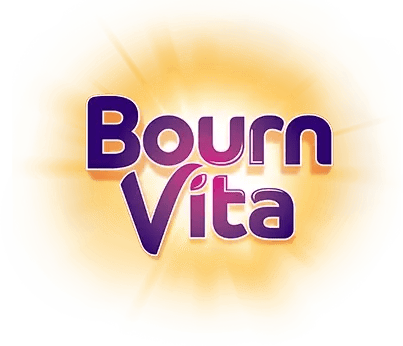- Encourage Outdoor Playtime
- Include Boosted Milk and Dairy
- Add Eggs to Their Diet
- Introduce Fish in Weekly Meals
- Make Use of Healthy Oils
- Plan Outdoor Family Activities
- Combine Vitamin D with Calcium-Rich Foods
Introduction

Vitamin D is key to your child’s health, from building strong bones and teeth to immunity and energy levels. But with school schedules, indoor activities, and busy routines, many children aren’t getting enough of this essential nutrient daily. The good news is it’s easier than you think, and small daily habits can make a big difference.
Sunlight is one of the best natural sources of Vitamin D, as even short periods of outdoor play can give the body what it needs. Along with this, including Vitamin D-rich foods like eggs, fortified milk, and fish in meals gives an extra boost. For children who spend most of their time indoors, being mindful of these sources becomes even more important.
Getting the right amount of Vitamin D daily isn’t about complicating routines, it’s about finding a balance between nutrition, outdoor activity, and awareness. By making these habits a part of daily life, you’re giving your child the support they need for steady growth, better immunity, and overall well-being. With consistent attention, Vitamin D becomes a natural part of their daily foundation for good health.
7 Practical Ways to Support Daily Vitamin D Intake

Vitamin D is often referred to as the sunshine vitamin, and for good reason, it plays a crucial role in helping children grow strong, stay active, and maintain good health. It supports bone development, boosts immunity, and even helps with energy levels and mood. Despite its importance, many children today are not getting enough Vitamin D, mainly because of indoor routines, limited sun exposure, or diets lacking in nutrient-rich foods.
The good news is that with mindful daily habits, you can ensure your child gets the right amount of Vitamin D. From outdoor activities to balanced meals, there are many natural ways to include this essential nutrient in their routine.
Encourage Outdoor Playtime
According to a study published in Dermatoendocrinol. 2013, spending even 20–30 minutes outside in the early morning or late afternoon sun allows the body to produce Vitamin D naturally. Encourage activities like cycling, skipping, or a game of catch to make sunlight exposure fun and safe. This habit also doubles up as physical exercise, supporting overall health.
Include Boosted Milk and Dairy
Milk enriched with Vitamin D is one of the easiest ways to improve daily intake. Pairing it with foods like paneer, curd, or cheese can make meals both tasty and nutritious. Research published in Nutrients. 2020 shows that regular consumption helps children build stronger bones and teeth, while also supporting their energy needs.
Add Eggs to Their Diet
Eggs, especially the yolk, are a natural source of Vitamin D. A study published in Nutrients. 2019 highlights that including boiled eggs for breakfast or adding them to sandwiches and curries is a simple way to boost this nutrient. For children who enjoy variety, eggs can be cooked in several ways, ensuring nutrition never feels repetitive.
Introduce Fish in Weekly Meals
Fatty fish like salmon, mackerel, or sardines are excellent sources of Vitamin D. Adding them to your child’s meals once or twice a week can make a noticeable difference. As per a study published in Front Nutr. 2023 for families that prefer vegetarian diets, fortified alternatives can be used to fill this gap.
Make Use of Healthy Oils
Certain oils like cod liver oil or even fortified vegetable oils are rich in Vitamin D. A small amount added to meals can contribute significantly to daily intake. According to FSSAI, using these oils wisely ensures that children get the nutrients they need without changing their regular diet drastically.
Plan Outdoor Family Activities
Beyond regular play, planning weekend picnics, walks, or gardening sessions helps children get fresh air and Vitamin D together. Research conducted by Porto Biomed J. 2017 shows that these shared activities strengthen family bonds while ensuring that children benefit from healthy sunlight exposure joyfully.
Combine Vitamin D with Calcium-Rich Foods
For Vitamin D to work effectively, it needs calcium. Pairing Vitamin D sources with foods like ragi, almonds, or leafy greens ensures better absorption. According to FSSAI, this combination supports both bone density and overall strength, making it a practical step in meal planning.
Conclusion

Vitamin D is a small nutrient with a big impact on your child’s growth and well-being. By encouraging outdoor play, planning family activities, and making thoughtful food choices, you can ensure your child gets enough of it daily. From milk and eggs to sunshine and calcium-rich pairings, each step adds up to stronger bones, better immunity, and healthier energy levels. With consistency and care, Vitamin D becomes not just part of a diet but part of a lifestyle that supports lifelong health.
Her love for storytelling began with reading her grandfather’s speeches, where Tarishi saw the power of words in creating lasting memories. Combining her passions for food and writing, she has turned her life into a fulfilling path of sharing stories that celebrate flavours and how food brings communities together.
The views expressed are that of the expert alone.
The information provided in this content is for informational purposes only and should not be considered a substitute for professional medical advice, diagnosis, or treatment. Always seek the advice of your physician or another qualified healthcare provider before making any significant changes to your diet, exercise, or medication routines. This is a sponsored article.
References
https://fssai.gov.in/upload/media/FSSAI_News_Vitamin_NDTV_02_07_2019.pdf
https://pmc.ncbi.nlm.nih.gov/articles/PMC6806863/
https://fortification.fssai.gov.in/commodity?commodity=fortified-oil
https://pmc.ncbi.nlm.nih.gov/articles/PMC10153001/
https://pmc.ncbi.nlm.nih.gov/articles/PMC6470839/
















